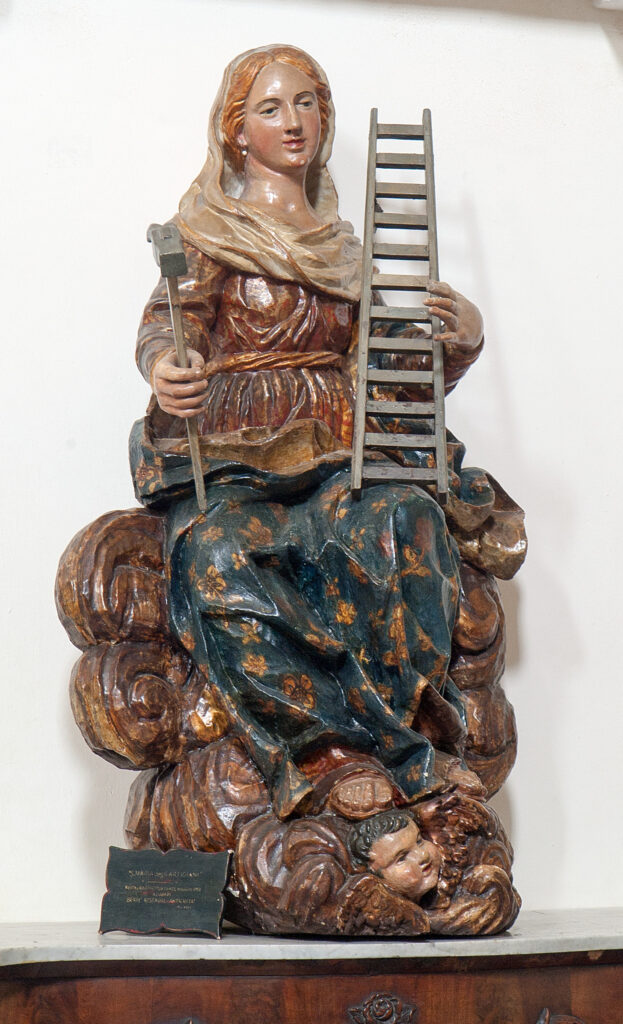
Author: Unknown Sicilian sculptor
Date: End sec. XVII – beginning sec. XVIII
Material: Wood carved and painted
Dimensions: cm 123x74x52
Location: Milazzo, church of San Giacomo
Neglected by local sources, the graceful sculpture was placed in the church of San Giacomo in relatively recent times and the current state of research is unknown origin. The particular iconography with the Virgin supporting a ladder and a hammer, identifying attributes of the carpenters’ activity, is at the origin of the name by which the statue is commonly remembered. It is known the existence of an ancient Brotherhood of Craftsmen who was based in the church of Santa Caterina d’Alessandria, formerly located in the village and in the eighteenth century moved to via Umberto, while another brotherhood, constituted by artisans and dedicated to San Giuseppe, was located in the church dedicated to the saint.